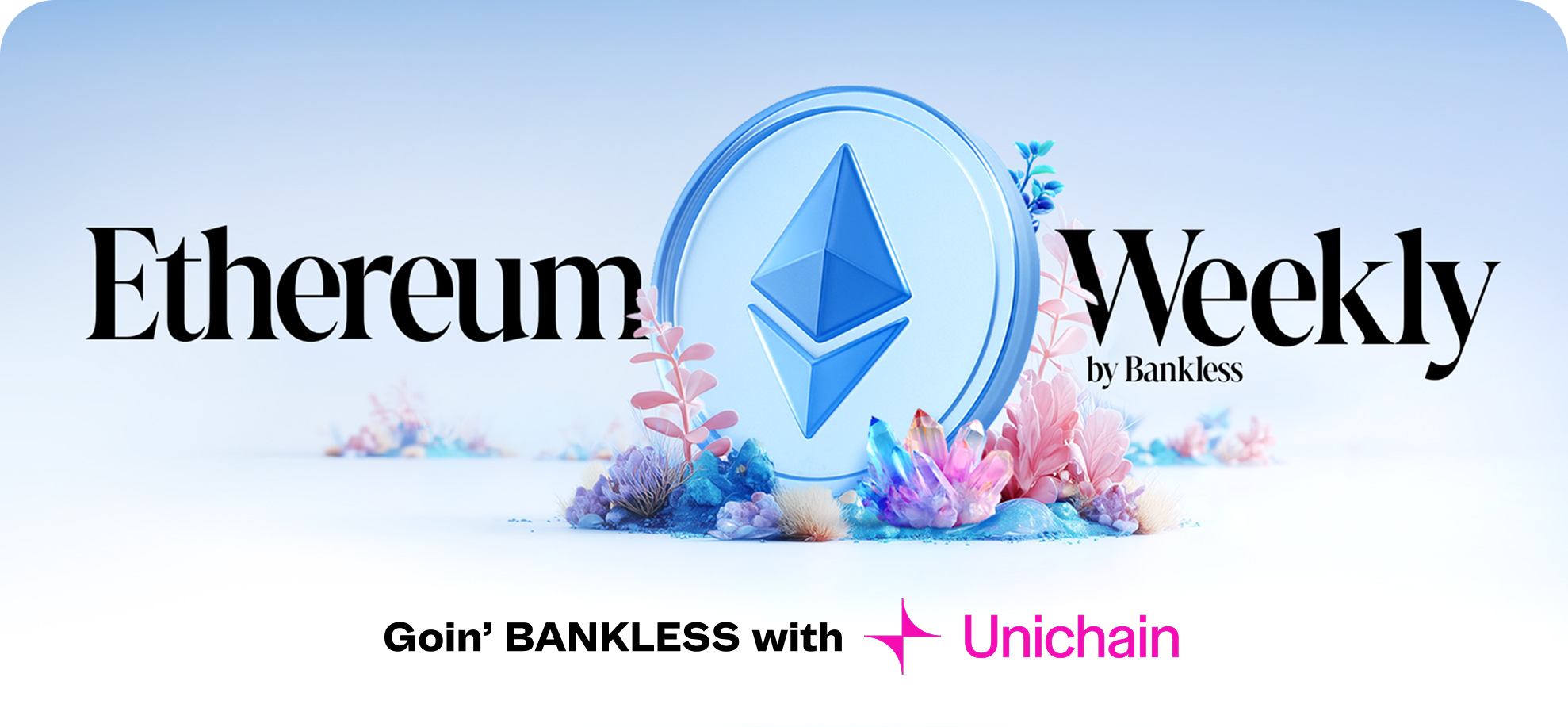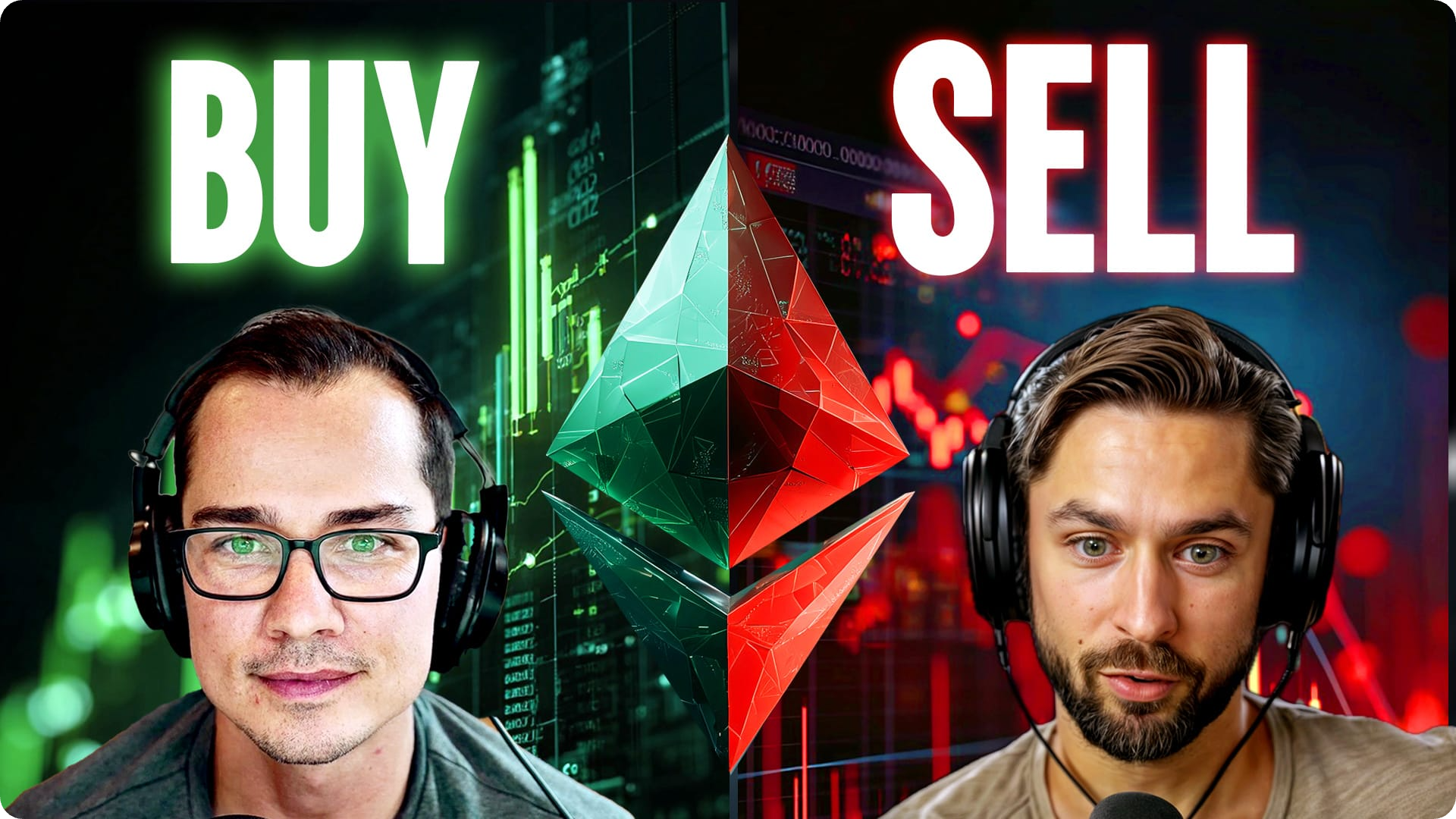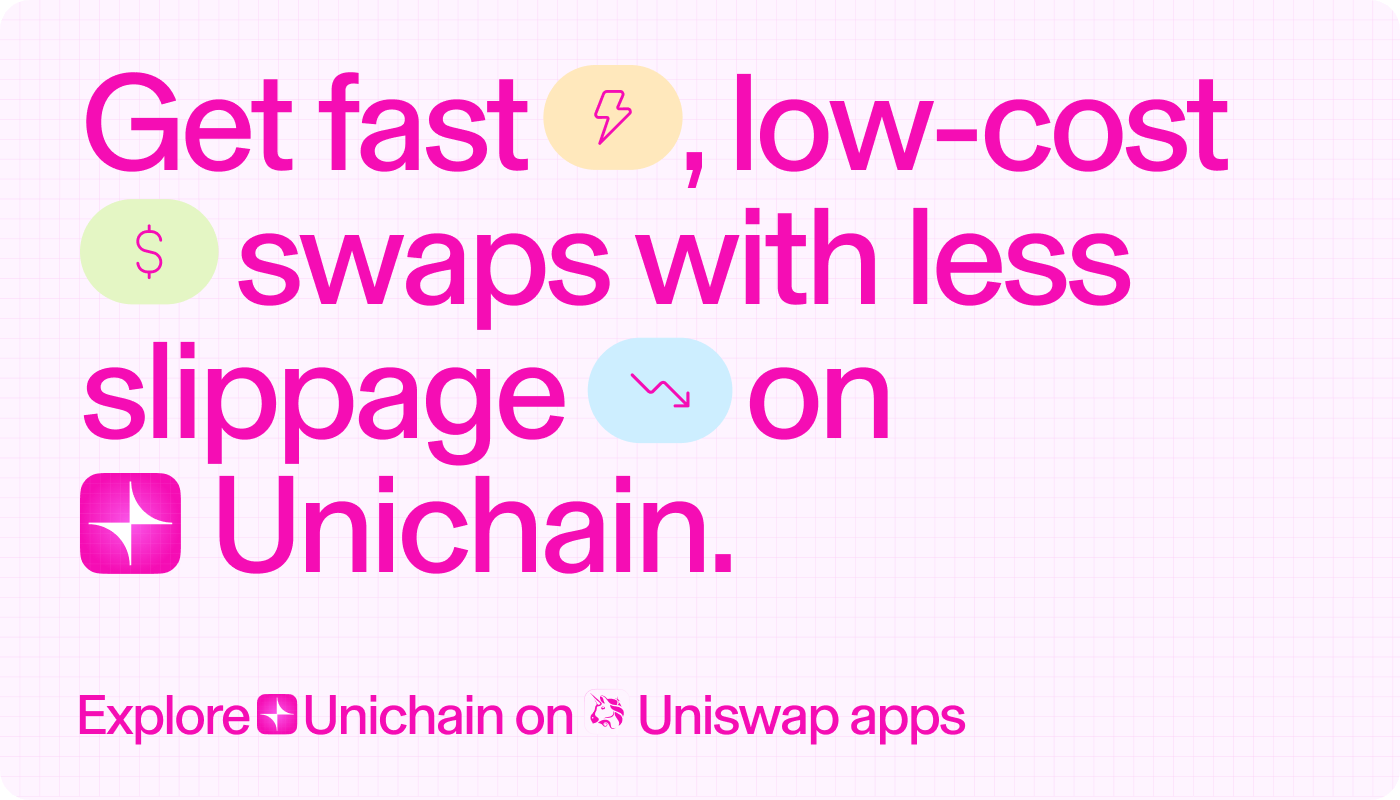Ethereum's New Heights


View in Browser
gm Bankless Nation,
So, I don't need to tell you that yesterday was huge.
We topped 2021 all-time highs. It's external signal that Ethereum as a movement is stronger than ever. It's internal signal that the ETH opportunity is just beginning to be understood.
I love this week's piece below from David Hoffman on Ethereum as the financial layer for the Open Source movement. It's a showcase of what the Ethereum community has achieved and why rival blockchains fail to keep pace.
Happy ATHs and thanks for being a subscriber,
luma, Bankless Editor 🫡
Sponsor: Unichain — Faster swaps. Lower fees. Deeper liquidity. Explore Unichain on web and wallet.

Ethereum’s north star is open source.
The entire Ethereum project is defined and guided by an open source ethos.
Here’s a general definition of open source:
Open source is software whose source code is made publicly available, allowing anyone to view, use, modify, and share it under the terms of a specific license. It emphasizes transparency, collaboration, and community-driven development, enabling developers and organizations to adapt the code to their own needs while also contributing improvements back to the wider community. Unlike proprietary software, which restricts access and modification, open source thrives on openness and shared innovation.
If you find yourself in the Ethereum community, it's likely because you see open source as fundamental or foundational to the main quest line of crypto.
After all, if we rebuild the financial system with code that is proprietary, opaque, and unforkable, did we really rebuild anything at all?
An open source financial system is what gives the power back to the users. Users can “right-click and inspect-source” their financial applications and see the complete internal state of the apps they are curious about – an ability that stands in direct contrast to the opacity that led to the 2008 financial crisis, where end-users ended up financing the bailouts.
When a single developer can fork and adapt code, it creates a ruthless marketplace where only the strongest software survives. The best projects are reused, refined, and hardened until they become foundational infrastructure in the open source ecosystem.
Open source software is alive – it grows, adapts, and integrates.
Like “money legos,” it is inherently combinatorial. A single project may be unremarkable on its own, but as more sophisticated software accumulates, a larger emergent phenomenon takes shape. Each app’s value compounds as it connects with others, creating a network where every component reinforces the whole.
The Open Source Project
I’ll define humanity’s “Open Source Project” as a great collective experiment in building knowledge as code. It is a living organism, sustained by millions of contributors across time and space, where ideas are forked, remixed, and refined in a relentless pursuit of better solutions.
More than any single program, it is the shared infrastructure of the digital age—transparent, permissionless, and infinitely combinable. Like language or science, it grows stronger the more it is used, forming a self-perpetuating system that embodies the principle that progress is best achieved in the open, together.
Before Ethereum, we had open source software that existed in silos. Individual bits of code, that perhaps used others' bits of code, but each deployment was a one-off instance – a fleeting, incomplete manifestation of a larger collective emergent open source project.
With Ethereum, open source has a place to call home. An economic foundation for the value of open source to coalesce and cohere, and with the financial incentives needed to do so.
The Ethereum project has captured my attention because of its potential to produce a single unified structure of robust and hardened open source software.
Developers are finding ways to put code on Ethereum, and make that code useful. Other developers are finding ways to put code on top of the code that came before them. Other developers are trying to solve technical or engineering challenges to make more code fit in more places on Ethereum (Eigenlayer, Ethereum L2s, etc).
The Peloton Always Wins
In my younger years, I loved cycling. The fact that I could, under my own power, hold over 20mph on nothing but a bike felt like freedom.
Back in college, a friend and I would ride from Orange, CA to Santa Monica and back. One day we jumped on the cycling path just as a peloton of about fifteen riders came by. Cocky twenty-year-olds that we were, I turned to my buddy and said, “Let’s get ahead of these guys.” We sprinted hard and managed to hold the lead for a while. But ten minutes later, I was cooked. I was taking the headwind, carrying the load alone at the front. Then I heard it: “On your left!” One by one, the group streamed past us, smooth and effortless.
I learned an important lesson that day: The peloton always wins.

No one in a peloton rides alone. When the leader tires, they slip back into the draft and someone fresh takes the wind. In the middle of a peloton, air resistance can drop by 60% – you can just coast while the group pulls you forward.
And the bigger the peloton, the more efficient the machine, and the farther it goes.
If you want to go fast, go alone.
But if you want to go far, go together.
Ethereum is the Peloton of Open Source Financial Software
Every Ethereum competitor has broken away from the peloton and engaged in a sprint. In cycling races, this happens all the time, and is a core part of the strategy to winning. Eventually, you need to defect from the group, throw on your afterburners, and get over the finish line. You’re never going to be first by staying inside the group.
When and how one decides to break away into a sprint is up to them, their conditioning, and readiness.
When applying this metaphor to the world of open source blockchain financial technology, there’s just one problem.
There is no finish line.
The race never ends.
The way you win is by aggregating the largest peloton and coordinating your leaders effectively.
This is why I am bullish Ethereum.
Ethereum’s foundation is inherently aligned with the values of open source technology, and that makes Ethereum’s peloton accessible to the most amount of people. The development of Ethereum has been with the specific strategy of being maximally inclusive to more riders in its pack. Ethereum has a comprehensible specification, multiple clients written in different languages, multiple L2 implementations to build on, and a virtual machine that is becoming the standard of Wall Street institutions.
The structure of Ethereum grows alongside the contributions to its open source ecosystem.
ETH
ETH is the native asset of Ethereum’s open source superstructure. It is the currency that flows through, secures, and coordinates this global peloton of code.
Every smart contract, every L2, every application that plugs into Ethereum settles back into ETH. It is both the fuel and the collateral that makes the system work, the economic foundation that open source software has never had before.
Traditional business school models break down here. ETH is not “revenue,” it is not “equity,” and it is not neatly captured in any REV framework. ETH is the monetary substrate of humanity’s open source financial organism. Its value comes not from profit margins, but from the network effect of millions of people building, remixing, and compounding open source code into a financial system that is greater than the sum of its parts.
📈 The Asset
- ETH reached new all-time highs of $4,884
- Bitmine now holds 1.52M ETH (~$7.3B)
- The SEC delayed staking for the 21Shares Spot Ethereum ETF
- BTCS announced a one-time “Bividend,” $0.05 per share in ETH
- DBS Bank plans to tokenize structured notes on Ethereum
- ETH ETFs now account for 5% of the ETH supply
- ETH’s market cap just had its 2nd-largest daily increase ever
- ETHZilla began trading on Nasdaq as $ETHZ
- Messari published its Q2 2025 State of Ethereum report
- RWAs have surged x20 on Ethereum since Jan. 2024
🏛️ The Protocol
- EF researchers proposed WHIR, a hash-based protocol to facilitate post-quantum secure Ethereum SNARKs
- The EF kicked off Phase 2 of the Trillion Dollar Security project and announced its latest translation hackathon
- ERC-8004, a standard for trustless AI agents on Ethereum, was proposed
📱 The Apps
- Aragon introduced private voting
- zRouter is now live on Base
- Base kicked off the Base Mentorship Program and Vibe Code Week for mini app builders
- Cap unveiled its stablecoin protocol on Ethereum
- Circle launched its crosschain Circle Gateway platform
- ether.fi rolled out physical cards for its Cash program
- ETH Strategy entered a staking partnership with ether.fi
- L2BEAT introduced its ZK Catalog 2.0
- MetaMask is launching the MetaMask USD stablecoin later this year
- Privacy Pools added support for World Liberty Financial’s $USD1
- RAILGUN unveiled the Token Shielder tool to shield tokens from any 0x address
- Safe introduced Fiducia, a new system for onchain trust rules
- Wyoming launched the $FRNT stablecoin on Ethereum + L2s
- Zora added support for short-form videos
🐸 The Culture
- ETHGlobal unveiled its 2025 New York hackathon finalists and announced ETHConf (June 2026)
- Ethereum’s website now has a new dedicated apps page
- Ethereum’s GDP is now among the top 110 economies in the world
💽 The Tech
- Flashbots is bringing its sequencing tech to the Superchain
- Kraken is now running all its Ethereum validators on DVT tech
- Nethermind & Taiko unveiled Catalyst for up to x30 faster preconfs
- Optimism introduced one-click local testnet deployments
- Spire announced Pylon, a platform for launching based appchains
- Wonderland is bringing Custom Gas Token (CGT) back to OP Stack and introduced an onchain metadata registry

On this week’s Weekly Rollup, Ryan and David ask if the cycle top is in or if alt season is coming while reviewing 30 market signals.
ETH ETFs pull in over $3B as Tom Lee buys more ETH and Saylor mints more MicroStrategy shares. Meanwhile the Fed signals a pro-crypto shift, Wyoming unveils a state stablecoin, and New York threatens new taxes, setting up another pivotal week in crypto.
Tune into this week's rollup! 👇

Unichain offers the most liquid Uniswap v4 deployment on any L2 – giving you better prices, less slippage, and smoother swaps on top trading pairs. All on a fast, low-cost, and fully transparent network. Start swapping on Unichain today.